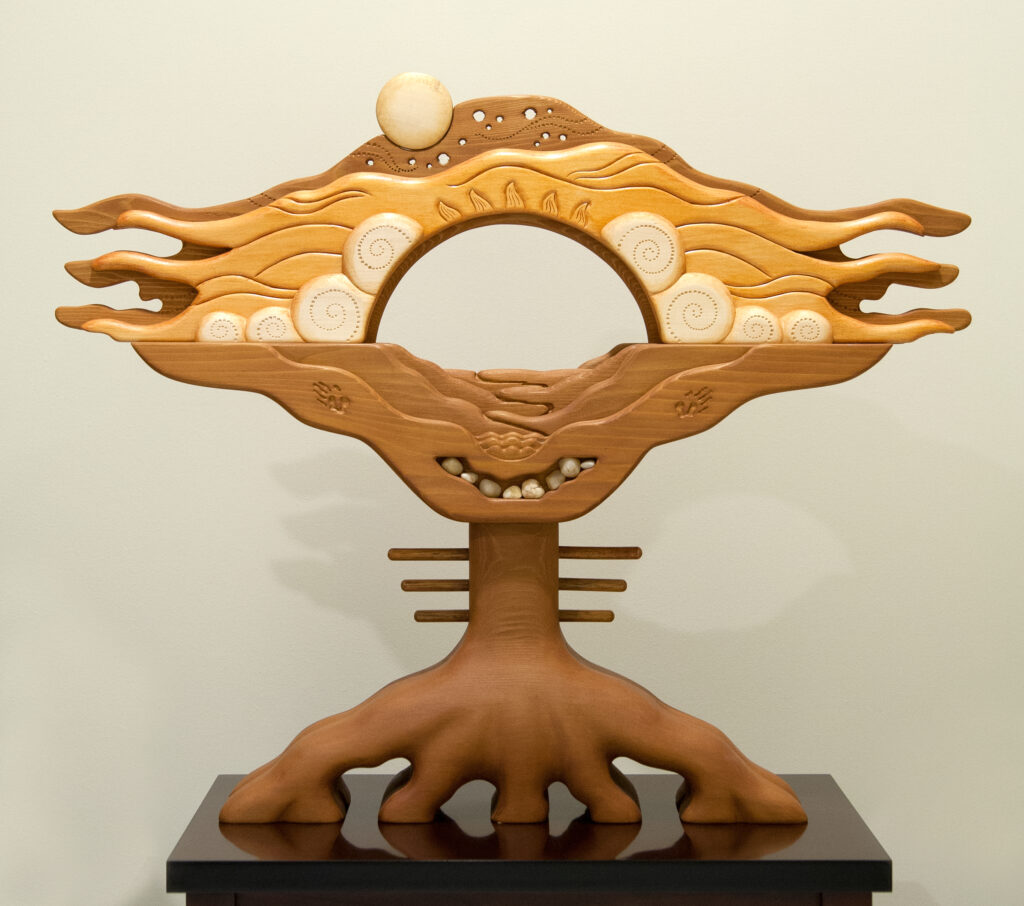Artist: Barbara Scott
Oklahoma: Open to Tomorrow is a three-dimensional sculpture representing the Oklahoma landscape, commissioned specifically for the Oklahoma Judicial Center. Artist Barbara Scott described her inspiration for the piece. “Each day of living here gives us the gift of a new rising sun, with new hope and open possibilities. Oklahoma’s landscape provides the space to achieve those possibilities, with its open expansive skies, billowing clouds, sweeping winds, running waters, rolling hills and plains.”
“The people who call Oklahoma home have the same characteristics as wood – aliveness, tenacity and strength, so wood seemed the perfect medium for the sculpture,” Scott said. She chose cedar for its dark, earthy, sturdy grain to represent the roots and land. Basswood was used for its light color, fine grain and airy texture to create the clouds, sky and moon. The design employs multiple layers of cedar and basswood to reflect the many layers of our state’s people, land and history. “Roots speak to Oklahoman’s deep connection to the land and our essential need for and commitment to, justice for our people.”
Though Barbara Scott was born in Indiana, her family moved frequently during her childhood. By the time she was 13, they had moved 11 times and she’d lived in eight cities and six different states. Her family settled in Oklahoma, but by then Scott had developed a wandering spirit. She hitchhiked to California, spent a year doing trail maintenance along the Rio Grande river in Taos, New Mexico, did off-shore fishing in Gloucester, Massachusetts, and farm work in North Dakota. The refuge of nature was one of the few constants in her life. She took up drawing as a way to express the darkness that haunted her from a difficult childhood.
Eventually, Scott returned to Oklahoma City and continued to explore nature through her art. She began a transition to three-dimensional pieces after being surprised by the beauty in a pile of broken pottery. “The irregular shapes intrigued me as an evocative symbol of form and our fragile lives,” Scott said. Later, she began working in wood, drawn by its natural beauty, its organic nature and its strength despite flaws acquired through the natural processes of growth and weathering.
